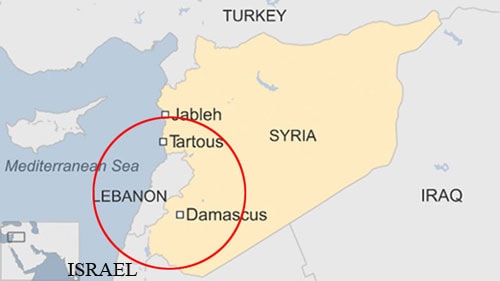Syria buys Russian S-300 missiles to threaten Israeli fighter jets?
The appearance of the S-300 long-range air defense system in Syria's inventory could cause Israel to lose its air superiority in the Middle East.
|
Russian S-300 air defense missile system. Photo:Sputnik |
Israeli Defense Minister Avigdor Lieberman said on April 16 that the country's air force has "freedom of action" in Syrian airspace to protect "national security interests." However, military analysts say such claims of absolute air superiority by Israel will not be possible in the future if Syria possesses Russia's S-300 air defense system, according toJPost.
Sergei Rudskoi, head of the Russian General Staff's Operations Department, said on April 14 that the country is considering resuming the contract to sell S-300 missiles to Syria after many years of interruption due to the intervention of some Western partners.
This information was given by Russia in the context of Syria having just suffered an attack with 105 cruise missiles from the US, UK, and France coalition, after the country was accused of using chemical weapons against civilians.
"Israel's fear of Syria's air defense capabilities will increase significantly after receiving modern Russian equipment. That will limit its ability to conduct air strikes against Iranian and Hezbollah forces in Syria, as well as destroy Syrian weapons facilities and supply routes to Hezbollah in Lebanon," said Mark Heller, an expert at the Institute for National Security Studies at Tel Aviv University.
During the seven-year Syrian civil war, Israel has publicly admitted carrying out 100 airstrikes against targets in Syria, while remaining silent on allegations of hundreds of other attacks.
The Syrian air defense network currently relies mainly on Soviet-era systems such as the S-75 Dvina, S-125 Pechora, S-200 Vega, and 2K12 Kub. The most modern air defense weapons in Syria's current inventory include the Pantsir-S1 short-range gun-missile system and the Buk-M2E medium-range system.
Despite being considered old, Syria’s air defense network has still shown its strength in many airstrikes conducted by Israel. In February, an antiquated long-range S-200 missile shot down a modern Israeli F-16I fighter that had entered the country’s airspace to attack an Iranian military base.
Some military experts believe that this is the reason why Israeli fighter jets no longer dare to enter Syrian airspace to conduct more airstrikes. The Russian military said that two Israeli fighter jets launched cruise missiles to attack Syria's T-4 base on April 9 from Lebanese airspace.
According to commentator Anna Ahronheim, if equipped with the S-300 system, Syria's air defense capabilities will be significantly enhanced, posing a real threat to Israeli fighter jets.The 64N6E circular radar of the S-300PMU-2 variant can simultaneously detect 300 targets at a distance of up to 300 km, enough to help Syrian air defense forces detect Israeli fighters operating in Lebanese airspace and alert the entire system.
|
The S-300 system located in the Syrian capital can help the country detect Israeli fighter jets operating in Lebanese airspace. Graphics:BBC. |
An S-300 complexincluding 6 transporter-launcher vehicles (TELs), each TEL can carry up to 4 ammunition, along with command vehicles and various radars.The fire control radar can guide 12 missiles at the same time against 6 separate targets with a maximum range of 195 km.
If Russia decides to resume the contract to sell S-300 to Syria, which was made in 2013, Israeli fighters will face the most serious challenge ever, and the lives of pilots will also be in danger, Ahronheim stressed.



